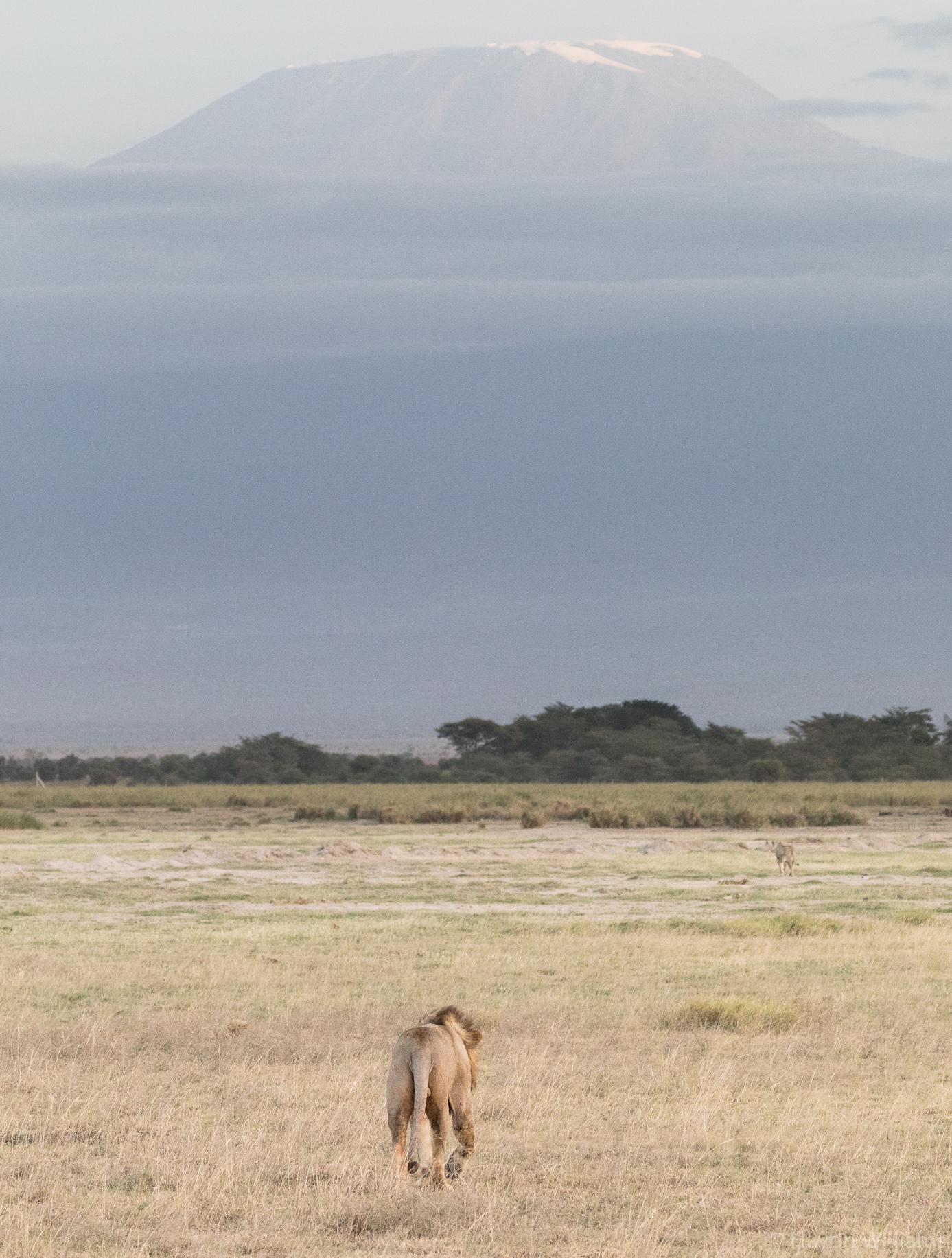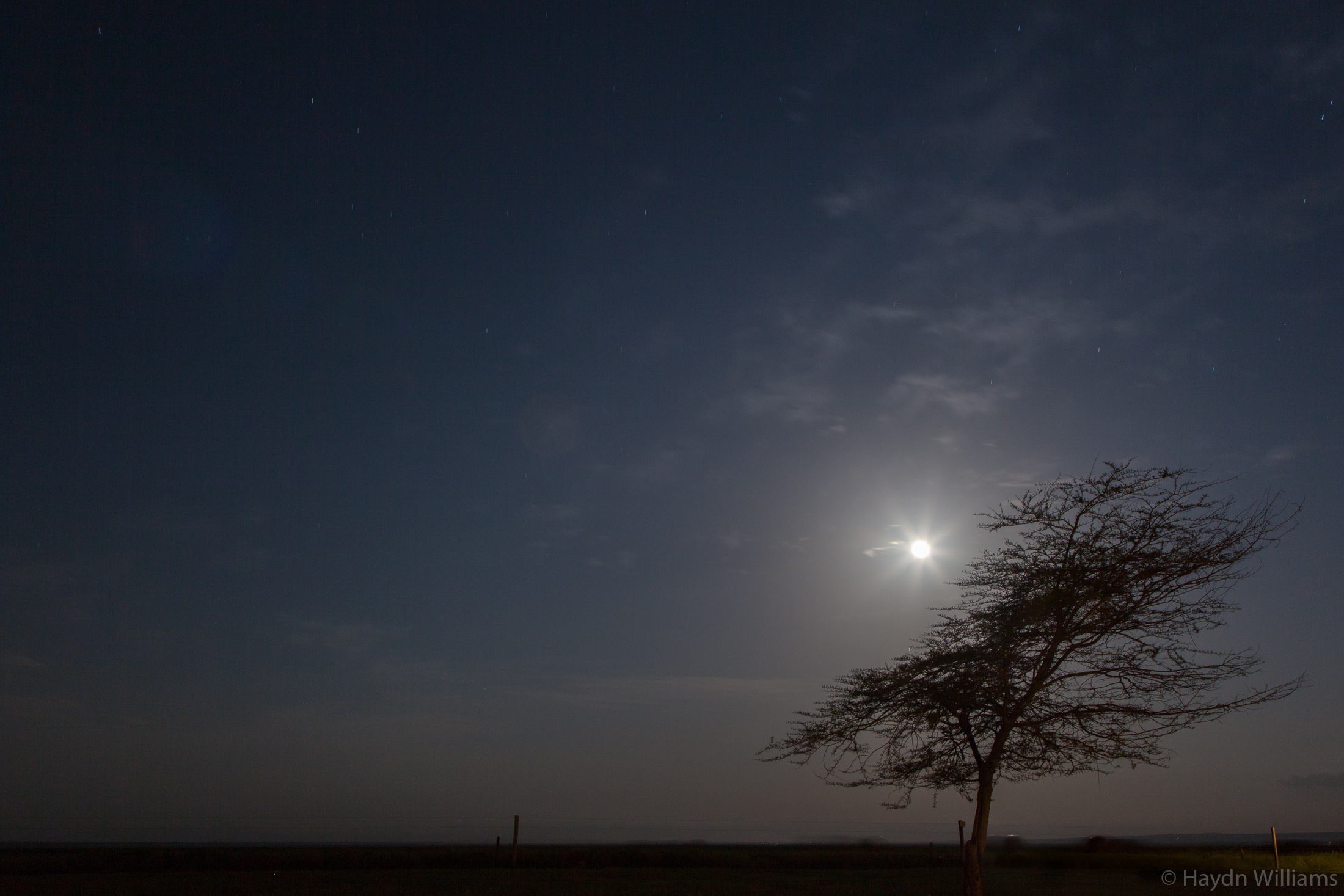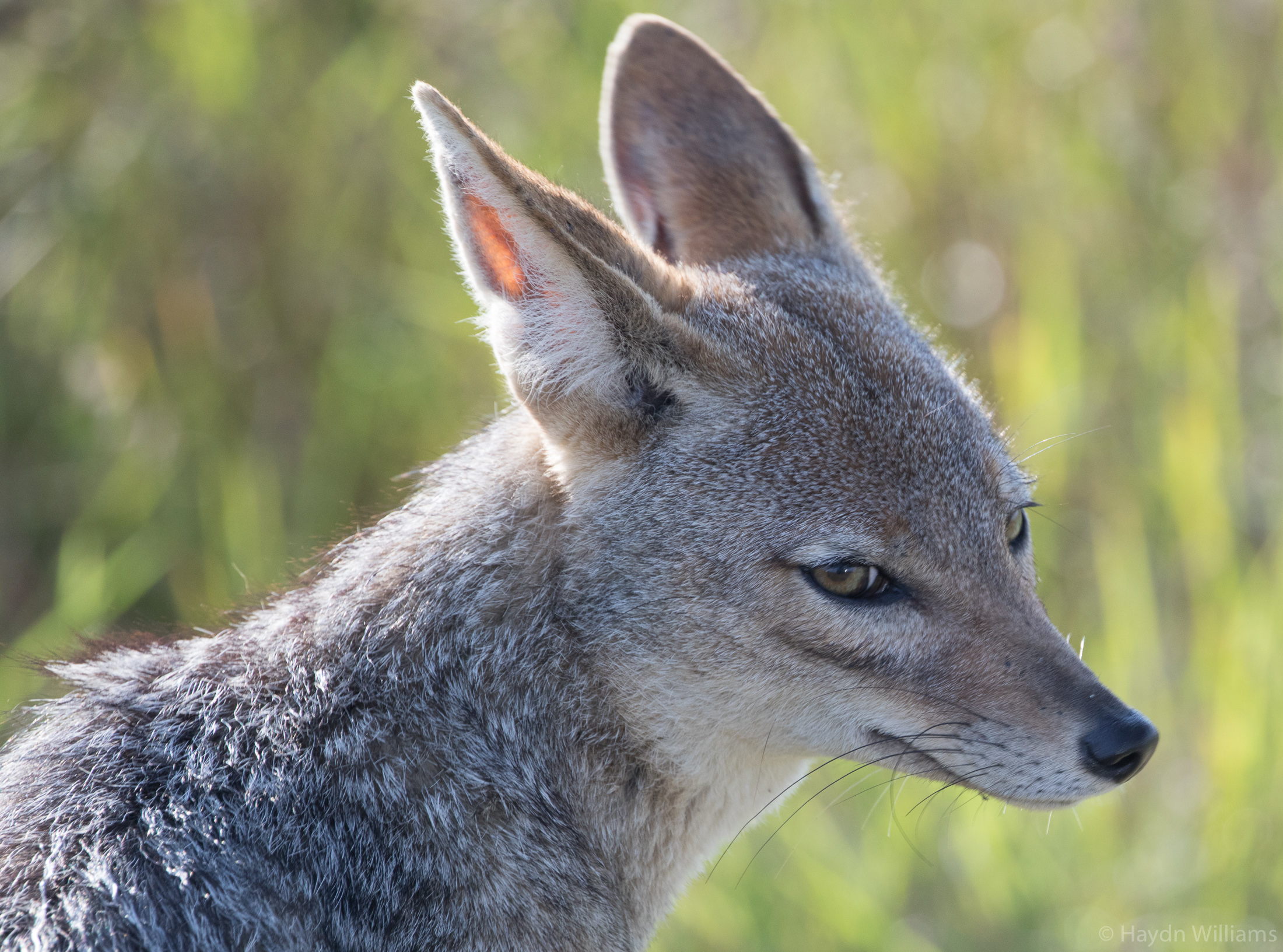Becs travelled out to Nairobi earlier this month to spend some time working with the University there. There was no way I was going to let her go on safari afterwards while I stayed at home, so I flew out to join her for one night in the city before we jumped in a jeep.
Accompanied by Becs’ work colleague Rik, we drove out to Amboseli National Park, south of the city. Before we even reached the hotel the animals had started appearing, with baboons sat next to the road as we approached the lodge.

After dumping our bags it was out for a drive, with lots of “ooh”s and “aah”s as we got up close and personal with the local fauna.

© Haydn Williams 2019

© Haydn Williams 2019
Amboseli is very flat, and seems to have excellent sunrises and sunsets. Our guide was determined that we should see the best of these, which was helpful from a photography perspective.

© Haydn Williams 2019
As the sun went down on day one, we were lucky enough to have our first encounter with lions.

© Haydn Williams 2019
The male was certainly looking a bit battered as he wandered off in the direction of Mount Kilimanjaro, which towers over the park from the nearby Kenya/Tanzania border.

© Haydn Williams 2019
Refreshed the following morning, we continued our tour of the bumpy tracks in our trust Land Cruiser – regular readers will know I have a soft spot for these after falling in love with one in Iceland.


© Haydn Williams 2019

© Haydn Williams 2019

© Haydn Williams 2019

Another lovely sunset finished the day, before we once again retired to the accommodation to chill out and try to avoid being bitten by malarial mosquitos.

© Haydn Williams 2019
We’d both taken every precaution in this regard, namely DEET, prophylactic antibiotics, and even some insect-bite-proof clothing. If anyone’s interested in the intricacies of training whilst on antimalarials (I realise that’s a niche audience), check out this post.

© Haydn Williams 2019
The familiar morning routine of “jump in jeep; place cameras on lap; eagerly scan horizon; leap up to take photographs” continued the following morning, as we were whisked across the park by our trusty guide, Abu.

With a detour to a less-travelled part of the park, we were pleased to get our first up-close view of giraffe. The thorn bushes they eat don’t look particularly palatable, but the giraffes seem to make use of their ridiculous tongues to good effect when getting hold of them.

© Haydn williams 2019
Despite being incredibly dry and dusty at first glance, Amboseli also has large swamps, fed by water draining from Kili and re-appearing in springs and lakes within the national park.

© Haydn Williams 2019

© Haydn Williams 2019
By this point I was starting to get to grips with the world of wildlife photography, although my usual landscape fodder was still coming more easily.

One consequence of being so near to the equator is that you get almost exactly 12 hours of daylight each day, from the rather civilised hours of 06:30 to 18:30. This means it’s each to catch sunrise and sunset, which is a real boon when they look so good. The full moon also rose in a favourable position that evening, and so I was able to grab a nice shot from the front porch of our room.

© Haydn Williams 2019
The following morning’s drive back to Nairobi took us past some conveniently-arranged ostrich, and then onwards along the crazy roads to Wilson airport.

Flying out of Nairobi you could see the posh bits, the slum bits, and the bit where only a dual carriageway separates urban sprawl from Nairobi National Park, full of lions and giraffes and other beasties.

© Haydn Williams 2019
Our small plane took us west over the great rift valley, and onward to the Masai Mara National Reserve.


© Haydn Williams 2019
This being a local flight, we made a couple of stops for drop-offs and pick-ups on the way. Our first landing was on a simple dirt airstrip, but by the return trip we had upgraded (?) the plane to a 12-seater Cessna Caravan, and downgraded the runways to “anywhere vaguely flat”. All every exciting – the landing speed of a Cessna Caravan would appear to be excessively high when you first touch down, but everyone else in the plane was playing it cool so I did too.

Ambosli had served us well, but our next guide Julius was about to give us an excellent introduction to the Mara Triangle. This is joined to the main Masai Mara conservancy, and also has the Mara river running through it, but is generally less busy than the main park. Within ten minutes of landing we were next to the river, looking at more of the serious stuff.

It’s this river where the wildebeest do their spectacular migration from one bank to the other, having to risk crocodiles and drowning on the way. Unfortunately it’s not until later in the year, although it sounds like everything gets a bit manic with tourists around that time anyway.

We followed this up with the briefest glimpse of a rhino and her calf, having forced the Land Cruiser through some incredible swampland to reach them. On the way to the hotel it was the turn of hyena to make an appearance, at a den not far from the entrance gate.

Despite their horrible reputation, I thought they were quite sweet and affectionate in a big family unit. This particular pack were also being studied by Michigan State University, who had no qualms about getting their vehicle up close and impinging on all the tourist photos. The cubs seemed to like it for gnawing on though!

The hotel was pretty cool, looking like something that should be found on Tatooine (although a friend did comment that it looked like a “gentrified Tatooine”!).

The bonanza continued the next day, with more zebra and some up-close jackal.

© Haydn Williams 2019

© Haydn Williams 2019
There were also a couple of Thomson’s gazelle having a bit of a scrap. They are apparently the fifth-fastest land animal, reaching speeds of 50-55mph. That’s perhaps not much use when your main predator is a cheetah going at up to 70mph though!

© Haydn Williams 2019
We took the opportunity to venture further afield, into the main Masai Mara conservancy, and this took us across the Mara Bridge. The corpses of wildebeest who don’t survive the river crossing tend to wash up here, so the whole place reeks of death and is populated with maribou storks (AKA the “undertaker bird”) and vultures picking off the fleshy remains. Both birds have featherless heads, so that they don’t get clogged up with blood and flesh as they rootle around in rotting carcasses.

Julius definitely had two paces when driving the jeep – normal slow “let’s have a look around at everything” pace, and the more determined “I’ve heard something on the radio but I’m not telling you what” pace. The latter eventually led us to the highlight of the trip – a leopard, and a good view of her too.

© Haydn Williams 2019
She was absolutely amazing to watch, giving off an air of elegance and power even when just wandering around in a leisurely manner. The experience was a little bittersweet though, because word soon got out on the radio and at least 25 vehicles ended up driving completely off-road and crowding around her.

© Haydn Williams 2019
Our guide confirmed that they’re not supposed to go that close (we stuck to dedicated tracks a good distance away), but that rangers can sometimes take a while to arrive, during which time tourists often bribe less scrupulous guides to drive right up to animals so they can get selfies. Which is a bit depressing. I realise there’s an element of “Are you part of the problem, or part of the solution?” here, but I’ll confess that through ignorance or stupidity this scenario had not occurred to me beforehand. We didn’t much like the situation, so left everyone to get on with it while we went off to see what else was around. “Lots of wildebeest” was one of the answers.

Although the main migration from the Serengeti to the Masai Mara doesn’t usually start until July, the number of wildebeest was still very impressive. It’s also quite interesting to see such huge numbers maintaining the discipline of narrow lines over great distances.

Some more quietness from Julius, and driving/slithering some considerable distance along infrequently-used tracks, led us to our next highlight.

© Haydn Williams 2019
The nice thing about seeing the cheetah and her cub was that we were the only vehicle there, apart from a ranger making sure we didn’t get too close. She just carried on with her day, although that did involve being on high alert due to the presence of a nearby hyena.
We also had a trip to the Tanzanian border, where the Masai Mara abuts the Serengeti National Park. I hadn’t realised that they are contiguous, but there’s not a huge differentiation between them on the ground – it would seem to be simply a trig point, which expands my international collection beyond just New Zealand.

© Haydn Williams
The next morning started bright and early. We begin our expedition with a trip to the river, where somebody had already found their breakfast.

Yet again Julius took us down random side-tracks, up and down bumps, and forging through swampy puddles, past almost-zero wildlife, to the point where we began to doubt him. More fool us, because we soon pulled up alongside some rhino!

© Haydn Williams 2019
There was another vehicle there, but it was the rhino rangers (who were also present when we glimpsed them briefly a few days earlier), so they don’t count. Again, it’s hard to put into words how impressive rhino are in real life. Sadly, they’re on the “critically endangered” list, which states:
Throughout most of the 20th century, the Black Rhino was the most numerous of the world’s rhino species which at one stage could have numbered around 850,000. Relentless hunting of the species and clearances of land for settlement and agriculture reduced numbers and by 1960 only an estimated 100,000 remained. Between 1960 and 1995, large-scale poaching caused a dramatic 98% collapse in numbers.
IUCN Red List, https://www.iucnredlist.org/species/6557/16980917
A lazy afternoon was later passed at the hotel, where we watched weaver birds constructing their nests from grass in the trees above the swimming pool.

© Haydn Williams 2019

© Haydn Williams 2019
There were also plenty of lizards hanging around in the midday sun, and rock hyrax scuttling around in the shade of the undergrowth. It think the former may have been Becs’ favourite part of the whole holiday, despite the fact that we have geckos in our kitchen already.


I also tried to photographs some fast-moving swallows as they darted over the surface of the pool, but their small size and rapid pace meant I didn’t have a huge amount of success.

With only the final morning remaining, another lap of the triangle beckoned, and we caught up with some lovely looking lions to finish off.


© Haydn Williams 2019
What’s really interesting with the lions and a lot of the other animals (the hippos and hyenas particularly) is the noises they make. Both lions and hippos are ground-shakingly deep, while the hyena were making lots of affectionate yips and yelps as they played or lay down together. I realise this sounds pretty obvious, but everyone’s focus is on seeing ‘the big five’ and everything else, and nobody ever mentions the variety of vocalisations, which tend to be less prevalent in a zoo environment.


© Haydn Williams 2019
And then a final sunrise before the plane home.

Amboseli was great, but I think the Mara was definitely my preferred location. The experience of being so close to wild animals that you’ve only ever seen on television or in a zoo before is quite powerful. However, it also really brought home to me how much the parks and conservancies are populated by tourists constantly, and how they/we can interfere with natural behaviours. I’d be tempted to go back, but not necessarily to pester the leopards and the rhino – I think you could easily pass a week of photographic holiday with all of the more common and less-endangered beasties.
Hi Haydn,
The images are fantastic and really bring Safari to life, so thank you for sharing these special memories.
I appreciate what you mean about the true South Africa being influenced by tourism but ensuring conservation of these wonderful animals is a priority. The impact of commercialism is a price worth accepting in the fight to protect endangered species.
Best wishes
Sue